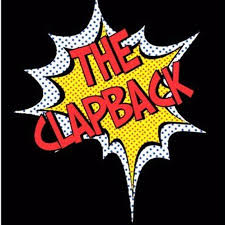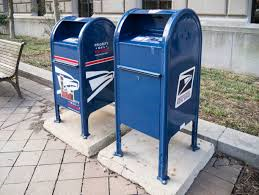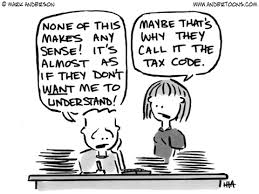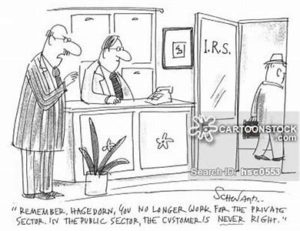COVID-19 Paycheck Protection Program (CARES) Part 1 – The Loan
UPDATED 04/08/2020
Coronavirus Aid, Relief, and Economic Security. CARES among many other things provides 349 Billion $$$ in forgivable loans used to pay employees and to a lesser extent, other expenses during this crisis. This is the Payment Protection Program (PPP). We are breaking the PPP into two parts: Part 1 – The Loan Application and Part 2 – The Forgiveness, which is soon coming to you.
What is the PPP? This is all about keeping your current employees working at their current base pay for eight weeks AFTER receiving the loan proceeds and getting you cash flow to get through this. Check with your bank to see if they are an existing SBA Lender or are planning on becoming one.
Existing SBA lenders began the PPP application process Friday, April 3, 2020 for small businesses and sole proprietorships. The program is available through June 30, 2020. We recommend sole proprietorships compile and summarize all 1099s received as a means to prove Schedule C income.
Existing SBA lenders are beginning the PPP application process Friday, April 10, 2020 for independent contractors and self-employed individuals. The program is available through June 30, 2020. We recommend compiling and summarizing all 1099s received as a means to prove Schedule C income.
Other regulated lenders will be on board as soon as they are approved to be an SBA Lender and are enrolled in the PPP.
We strongly recommend applying sooner than later. It will take lenders time to process and fund the millions of incoming applications and the available funds is capped at $349 Billion.
PART 1. THE SBA PPP LOAN APPLICATION
Check to be sure the SBA Paycheck Protection Program, Borrower Application Form, that you are completing is OMB Control No. 3245-0407 with an Expiration Date of 09/30/2020 (page 1, top right) and SBA Form 2483 dated 04/20 (page 4, bottom left).
There are a few changes from the two previous versions; we have incorporated the more significant ones in this update.
Who is eligible?
Small businesses and nonprofits with fewer than 500 employees, veteran organizations, sole proprietors, self-employed, and independent contractors, that were in operation before February 15, 2020. There is now a check the box for entity classification.
Self-employed individuals, independent contractors or sole proprietors must submit necessary documentation to establish their eligibility, including payroll tax filings, 1099s and details of income and expenses from the sole proprietorship.
Applicants must certify they have been adversely affected by the COVID-19 slowdown/shutdown. Adverse effects are staffing challenges, decrease in customers, decrease in gross receipts, or closure.
Applicants don’t have to runaround and look for other funding. The usual SBA “Credit Elsewhere” requirement does not apply.
Applicants that are not US citizens or not Lawful Permanent Residents (green card holders) are now clearly eligible to apply if the applicant can answer “Yes” to Question 7: “Is the United States the principal place of residence for all employees of the Applicant included in the Applicant’s payroll calculation?” The intent is acknowledging that foreign-owned companies have employees that work and live in the United States and that the loan proceeds stay in the United States. If any of the W-2/W-3 amount was paid to someone not living in the US – back out the amount the same as you would amounts paid over $100,000. These excluded amounts are probably required to be listed somewhere in the SBA Lender’s application. This will explain the difference, if any, between the Average Monthly Payroll calculation and the supporting documentation provided.
What is the loan? An applicant can take out only one loan under the PPP. The loan is 2.5 times your average monthly payroll not to exceed $10 million. There is an annualized per employee cap of $100,000. The intent of the program and therefore the proceeds from the loan are to fund eight weeks of payroll for your employees with the eight weeks starting as soon as you get the money.
Additionally, any EIDL loan proceeds, less the advance amount (the $10,000), received between January 31, 2020 and April 3, 2020 can be refinanced by adding the amount to the “x2.5 + EIDL” blue box on the SBA PPP application. Keep in mind that refinancing an EIDL loan into a PPP loan may save you up to 2.75% interest but it also cuts the payment deferral period from 12 months to 6 months and slashes the repayment period from 30 years to two years. If cash flow preservation is the top priority for the duration of the pandemic and the ensuing recovery period then refinancing may not be the optimal course of action.
What are the loan terms?
Interest rate is fixed at 1%.
Due in two years.
Payments are deferred for six months; BUT KEEP IN MIND interest is accruing.
Lenders may evaluate credit scores BUT will not require collateral or personal guarantees.
Loan terms are the same for everyone.
There are no prepayment penalties or prepayment fees.
What is considered eligible payroll for calculating average payroll?
Salary, wages, commissions, tips (capped at $100,000 annualized for each employee);
Payment for vacation, parental, family, medical, or sick leave;
Allowance for dismissal or separation;
Payment for group health care benefits, including insurance premiums (not counted in per employee $100,00 maximum);
Payment of any retirement benefit (not counted in per employee $100,000 maximum); and,
Payment of State or Local tax assessed on the compensation of employees (not counted in per employee $100,000 maximum).
If you issue Form 1099-MISC, Miscellaneous Income to people who do work for you, those amounts are NOT Salaries, wages, commissions, tips.
*** For Sole Proprietors and independent contractors: Wages, commissions, and tips you pay AND your net earnings (capped at $100,000 annualized for each employee). *** For Independent Contractors: Forms 1099-MISC you receive is eligible payroll.
What is NOT eligible payroll?
Compensation for any employee in excess of an annual salary over $100k;
Compensation for any employee whose principal residence is outside USA;
Compensation for nonresident aliens;
Compensation to employees deployed to a combat zone;
Qualified sick and/or family leave wages, for which a credit is allowed under Families First Coronavirus Response Act; and,
Amounts paid to independent contractors.
How do you calculate average payroll? 2019 gross payroll OR previous 12 months divided by 12. The same method should also be used in Loan Forgiveness calculations. We recommend sticking to 2019 payroll as it is quicker and cleaner.
Small businesses will use 2019 W-3 Box 1 amounts; less amounts over $100,00 per employee.
Sole proprietors and independent contractors will use payments to them that was not more than $100,000 in calendar year 2019.
Seasonal employers will use the average total monthly payments beginning February 15, 2019 or March 1, 2019 and ending June 30, 2019 less amounts over annualized $100,000 per employee.
Businesses not in business until 2020 will use average monthly payroll from January 1, 2020 to February 29, 2020, also less amounts over annualized $100,000 per employee.
Keep in mind – The $100,000 does NOT include healthcare or retirement benefits.
What else do I need?
SBA Lenders will require payroll verification in the form of W-2s, the W-3, the 940 etc. If you use a Professional Employer Organization or leasing company, you probably won’t have any of these payroll tax returns. No worries – Use the client W-2 report or similar report.
What else do I need to know?
KEEP IN MIND. At a minimum, 75% of the loan must go to paying employees. Any remaining funds can go to expenses such as Rent; Mortgage interest; Telephone/Internet; and, Utilities (electricity, water, gas, propane). This is important for The Forgiveness.
For eight weeks after loan closing: Try to keep as many employees working at their usual rate of pay. There is Less Forgiveness if headcount or payroll decreases by more than 25%.
We recommend you read the CERTIFICATIONS AND AUTHORIZATIONS and CERTIFICATIONS (Page 2) very carefully. If the proceeds are used for fraudulent purposes, the U.S. government will pursue criminal charges against you.
In addition to the monthly newsletter and weekly blog we will be sending COVID-19 updates through “Email Updates” to our registered subscribers.
Follow McAtee & Associates on your preferred social media for additional COVID-19 updates. We are on Facebook, Twitter, LinkedIn, and Google+.
Stay safe. Stay strong.
COVID-19 DISCLAIMER:
During this time, you will notice more emails from Carol McAtee & Associates CPAs as we do our best to keep on top of what we think is important to you.
Laws and regulations have quickly changed and will continue to change in order to mitigate the economic damage caused by the Coronavirus Crisis. New laws and regulations are being passed quicker than the legislative process has taken in the past. And the interpretations are changing daily, if not hourly. Deadlines and due dates are being extended and re-extended. Please keep this in mind as we get through this together.
McAtee and Associates’ Disclaimer:
Our blog is intended for educational and awareness purposes. The general information provided about taxes, accounting, and business-related topics is by no means intended to provide or constitute professional advice. Reading our blog does not create a Client/CPA relationship between you and us. The blog, including all contents posted by the author(s) as well as comments posted by visitors, should not be used as a substitute for professional advice or as a substitute for communicating with a competent, human professional.
Our blog posts are written using current information and current or proposed rules and regulations. Information becomes old and outdated. Rules and regulations are frequently changed, added, amended, and/or left to expire. This is extremely true with most things tax and to a lesser and slower extent, most things accounting. We usually do not go back and update posted blogs. Always check with your CPA or accountant regarding not only rules and regulations but available options and how it all applies to your fact pattern and you.



 reimbursements into accounts. Mobile apps are reconciling corporate cards, generating expense reports and integrating with ERP packages (such as SAP, Oracle, NetSuite, Microsoft Dynamics/Navision) and of course QuickBooks.
reimbursements into accounts. Mobile apps are reconciling corporate cards, generating expense reports and integrating with ERP packages (such as SAP, Oracle, NetSuite, Microsoft Dynamics/Navision) and of course QuickBooks. District of CA) on the premise of the common law mailbox rule. The IRS came armed with the rules they put in place in 2011. In August 2015 it was on. Taxpayer -1; IRS – 0.
District of CA) on the premise of the common law mailbox rule. The IRS came armed with the rules they put in place in 2011. In August 2015 it was on. Taxpayer -1; IRS – 0.
 many years of statutory interest + the $25,000 in awarded legal fees. Taxpayer -1; IRS -2.
many years of statutory interest + the $25,000 in awarded legal fees. Taxpayer -1; IRS -2.
 the IRS – the presumption of delivery. Code section 7502 also says there is a presumption of delivery from you to the IRS when you send by registered or certified mail. The date of registration is the postmark date for registered mail and the date on the receipt is the postmark date for certified mail.
the IRS – the presumption of delivery. Code section 7502 also says there is a presumption of delivery from you to the IRS when you send by registered or certified mail. The date of registration is the postmark date for registered mail and the date on the receipt is the postmark date for certified mail. along. The Treasury Regulations (IRS rules) kicked the common law mailbox rule to the curb. There was to be no more presumption of delivery. There was to be no circumstantial evidence like affidavits and counting days. Taxpayers ever since have had to demonstrate direct proof of delivery to the IRS. Simply, put the rules are unforgiving and as harsh as when we started pre-1954.
along. The Treasury Regulations (IRS rules) kicked the common law mailbox rule to the curb. There was to be no more presumption of delivery. There was to be no circumstantial evidence like affidavits and counting days. Taxpayers ever since have had to demonstrate direct proof of delivery to the IRS. Simply, put the rules are unforgiving and as harsh as when we started pre-1954. took an act of Congress to allow the printing of postage directly on the mail.
took an act of Congress to allow the printing of postage directly on the mail. Return Originator (ERO), an authorized IRS e-file Provider who originates the electronic submission of the return to the IRS. An ERO can be the software developer or the tax preparer themselves.
Return Originator (ERO), an authorized IRS e-file Provider who originates the electronic submission of the return to the IRS. An ERO can be the software developer or the tax preparer themselves. are met. Those requirements being taxpayers self-report their income annually and submit income tax payments.
are met. Those requirements being taxpayers self-report their income annually and submit income tax payments. unanswered mail. Holy heck, where do they put it all?
unanswered mail. Holy heck, where do they put it all?